Introduction
Firefighting is a noble profession, but it comes with unique challenges. Firefighters often face stressors that can spill over into their personal lives. Irregular hours, exposure to trauma, and job-related pressures create an environment where maintaining relationships can be tough.
Understanding firefighter divorce statistics is crucial. These statistics reveal insights into the mental health impacts of the job, as well as the strain it places on family dynamics. By analyzing these statistics, we can better comprehend the realities faced by those in this demanding profession.
Throughout this article, we will explore various sources of data to uncover the truth behind firefighter divorce rates. We’ll look at studies that provide a clearer picture of how the divorce rates among firefighters compare to those in the general population. This analysis will shed light on the factors influencing these statistics and help us understand the broader implications for mental health and family stability.
The Divorce Rate Among Firefighters
Overview of Divorce Rates
In the United States, the divorce rate for first marriages hovers around 40-50%. However, when we focus on firefighters, the numbers tell a different story. Recent studies reveal that male firefighters have a divorce rate of 11.8%, higher than the 9.4% seen in the general population. Meanwhile, female firefighters experience a staggering divorce rate of 32.1%, compared to just 10.4% for women overall.

These statistics illustrate a significant disparity. Male firefighters, while facing some challenges, tend to fare better in terms of marital stability than their female counterparts. This discrepancy raises questions about the unique pressures female firefighters encounter in a male-dominated field.
Interestingly, despite the higher divorce rates among female firefighters, many male firefighters remain married. In fact, approximately 77% of male firefighters are currently married, compared to 57.5% of the general population. This suggests a strong commitment to family, even amidst the challenges posed by the profession.
Furthermore, while the divorce rate for male firefighters stands at 11.8%, it’s essential to note that this figure is not significantly higher than the general population. Conversely, the divorce rate for female firefighters indicates a pressing need for support and understanding in this area.
Overall, these statistics highlight the complexities of marital stability within the firefighting profession. Understanding these dynamics is vital for addressing the mental health needs of firefighters and their families.
Comparison with Other Professions
When discussing divorce rates in high-stress professions, firefighters often come up in the conversation. Surprisingly, their rates differ significantly from those of other first responders like military and police personnel. In a study by Dr. McCoy and Dr. Aamodt (2009), it was revealed that male firefighters have a divorce rate of 14.1%. In comparison, the general population’s divorce rate stands at 16.4%. That’s right! Firefighters, despite their demanding jobs, fare slightly better than average when it comes to marital stability.
But let’s not get carried away. The comparison changes when we look at female firefighters. They experience a divorce rate of 32.1%, which is significantly higher than the general population’s rate of 10.4%. This stark contrast raises eyebrows and questions about the unique challenges female firefighters face in a male-dominated environment.
Moreover, when we compare firefighters to military personnel, we see even higher numbers. Military personnel have a divorce rate of 18.7%, which is notably higher than that of male firefighters. Thus, while male firefighters enjoy relatively stable marriages, their female counterparts often struggle against societal pressures and job-related stressors that contribute to higher divorce rates.

Factors Contributing to Firefighter Divorce
Unique Challenges of the Firefighting Profession
Irregular Work Hours
Firefighters don’t just punch a clock. They often work long, unpredictable hours. Their shifts can last 24 hours or more, leading to missed family dinners and important events. Imagine trying to plan a birthday party while your spouse is off saving lives! This constant disruption can put a strain on family life, leading to frustration and misunderstandings.
To help ease the stress of those long shifts, consider a Firefighter Gear Bag. This spacious and durable bag can hold all the essentials and more, making it easier to stay organized and prepared for those unexpected shifts.
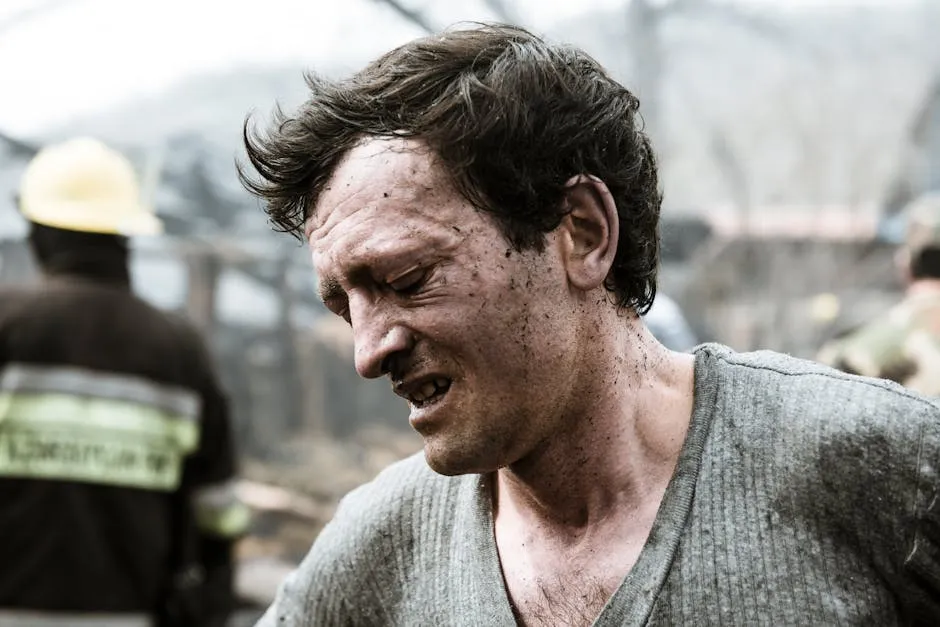
Exposure to Trauma
Let’s face it: firefighters see some pretty horrific stuff. From burning buildings to tragic accidents, their job exposes them to trauma regularly. This exposure can lead to psychological issues like PTSD, which can seep into personal relationships. A spouse grappling with the emotional fallout from a traumatic incident might find it difficult to connect with their partner. It’s a tough road, and the mental scars can linger long after the flames are extinguished.
Job-Related Stress
Alongside trauma, firefighters face a barrage of job-related stressors. The physical danger of the job, combined with the emotional toll of high-stakes situations, can create a pressure cooker environment. Add in the regular physical training and the need for peak performance, and it’s no wonder that stress can spill over into their home life.
Physical Injuries
Firefighting isn’t just dangerous; it can also be physically taxing. Injuries sustained on the job can lead to chronic pain and emotional distress. The financial implications of medical bills and missed work can further add to the strain. When a firefighter has to deal with the aftermath of an injury, the entire family feels the impact. A well-stocked Emergency First Aid Kit can be a lifesaver, ensuring that injuries can be treated promptly and effectively.
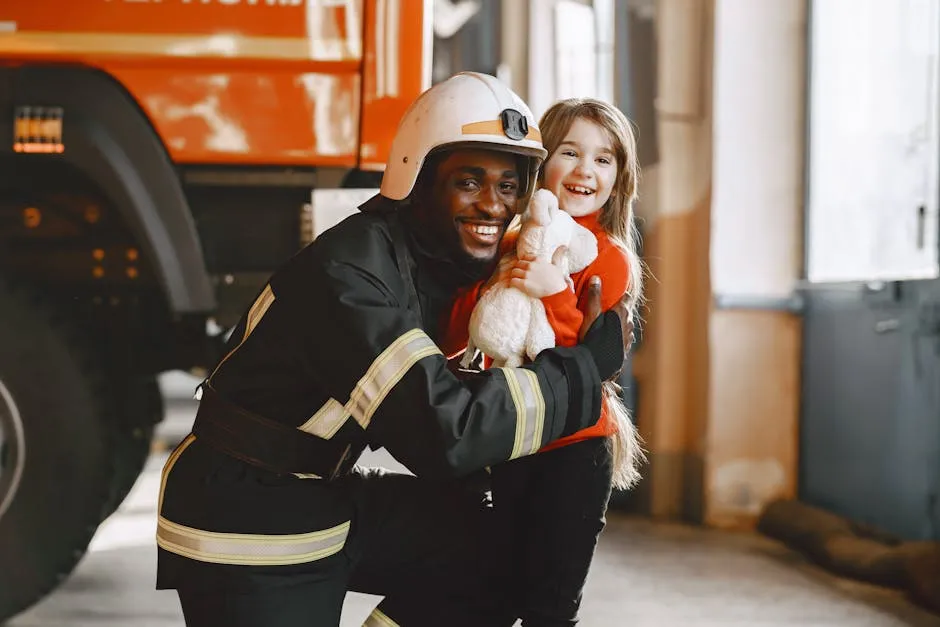
In summary, the unique challenges faced by firefighters—irregular hours, trauma exposure, job-related stress, and physical injuries—create a complex web of difficulties that can impact their marriages. While male firefighters may have lower divorce rates than the general population, the emotional and psychological burdens are still very real for both genders, leading to strain that can sometimes be too much to bear.
Impact of Stress on Relationships
Firefighting is a high-stress profession. That stress often creeps into personal lives. Communication breakdowns and emotional disconnect become common pitfalls for many couples. Firefighters face unique challenges. Long hours, traumatic experiences, and erratic schedules create a turbulent atmosphere at home.
Research indicates that around 50% of firefighters struggle with maintaining relationships due to job-related stress. Imagine returning home from a grueling shift, only to be unable to share your experiences. The inability to communicate feelings can lead to frustration. Spouses may feel isolated, while firefighters might withdraw emotionally.
It’s a vicious cycle that can leave both partners feeling misunderstood. The job demands peak performance in life-threatening situations. When that pressure transitions to home life, it can feel overwhelming. As a result, what should be a supportive environment can become a breeding ground for conflict.
The emotional toll doesn’t just affect the firefighter. Partners often bear the brunt, feeling neglected when their loved one is preoccupied. This disconnect can escalate over time. Misunderstandings build up, leading to resentment and frustration.

In summary, the unique stressors faced by firefighters do not merely impact their work performance. They also strain personal relationships, making effective communication absolutely vital. Addressing these challenges head-on is essential. The first step? Recognizing the impact of stress and making a conscious effort to connect, even amidst the chaos.
Gender Disparities in Divorce Rates
Male vs. Female Firefighters
The statistics surrounding divorce rates among firefighters reveal a stark reality. Male and female firefighters experience marriage differently. Male firefighters report a divorce rate of 11.8%, which aligns closely with the general population at 9.4%. However, female firefighters face a much grimmer picture. Their divorce rate skyrockets to 32.1%, three times higher than the general population’s rate of 10.4%.

What accounts for this disparity? Societal expectations and pressures play a significant role. Many female firefighters endure skepticism about their capabilities in a male-dominated field. Such scrutiny can create additional stress, straining relationships. The pressure to prove oneself can lead to emotional exhaustion.
Consider the story of Sarah, a female firefighter who juggles her demanding job and family responsibilities. Sarah often feels she must work harder than her male counterparts to earn respect. While she’s passionate about her job, the constant need to prove herself weighs heavily on her marriage. Her spouse struggles to understand this pressure, leading to distance and misunderstandings.
On the other hand, male firefighters enjoy a more supportive culture. Their challenges are often viewed through a lens of camaraderie. This environment can foster resilience, allowing them to cope better with stressors.
Another compelling narrative comes from Mark, a male firefighter who shares how his colleagues rally around him during tough times. He notes that strong male friendships within the firehouse provide stability. This supportive network often translates to improved marital satisfaction.
Yet, while many male firefighters report stable marriages, it’s essential to recognize the emotional toll of the profession. The job’s demands can still lead to marital issues, even if statistics suggest otherwise.

In conclusion, gender disparities in divorce rates among firefighters highlight the complexity of their experiences. Female firefighters face unique challenges that contribute to higher divorce rates. With growing awareness and support, there’s hope for improvement. Conversations surrounding mental health and relationship dynamics can lead to stronger, healthier marriages across the board.
The Role of Relationships Dynamics
Relationships can be tricky, especially for firefighters. The dynamics of their work often spill over into their personal lives. This can lead to strains and stresses that impact marriages and partnerships.
Firefighters often work in a culture of camaraderie. This tight-knit support system can benefit male firefighters. They bond over shared experiences, forming deep friendships that help them cope with job-related stress. However, female firefighters may not experience the same level of support. The male-dominated atmosphere can leave them feeling isolated.
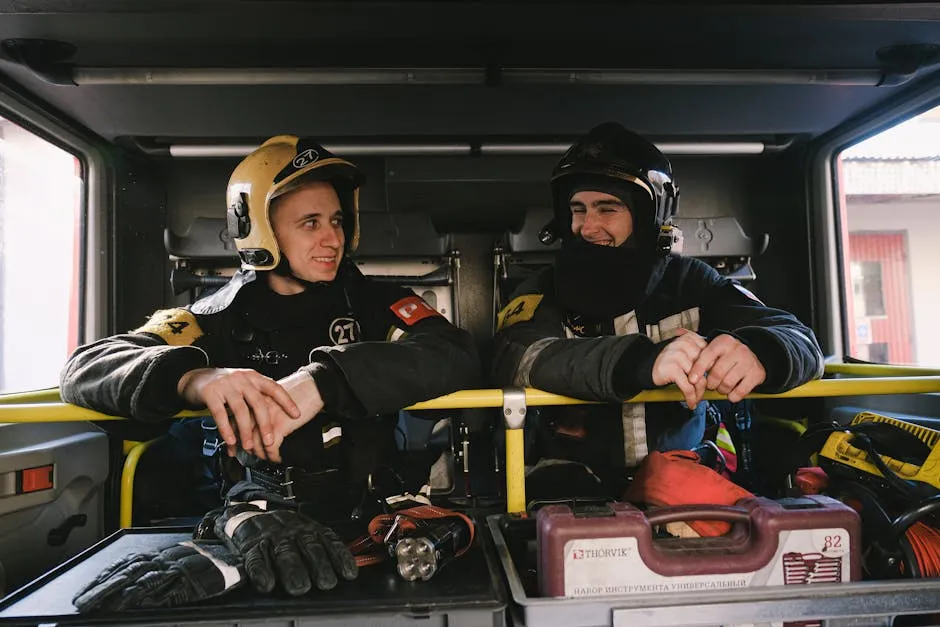
Imagine being the only woman in a room full of men. You might feel pressure to prove yourself constantly. This dynamic can lead to emotional exhaustion. As a result, female firefighters often find themselves in a vulnerable position. Their relationships may suffer as they grapple with these unique challenges.
Moreover, the unpredictable nature of firefighting can complicate personal relationships. Long shifts and emergency calls disrupt family life. When a firefighter misses a family event, it can create resentment and misunderstandings. Keeping a Firefighter Themed Coffee Table Book can be a great conversation starter and a way to bond over shared stories and experiences.
Understanding these relationship dynamics is crucial. Recognizing the challenges faced by both male and female firefighters can foster empathy and support. It can also lead to healthier relationships, benefiting both partners.
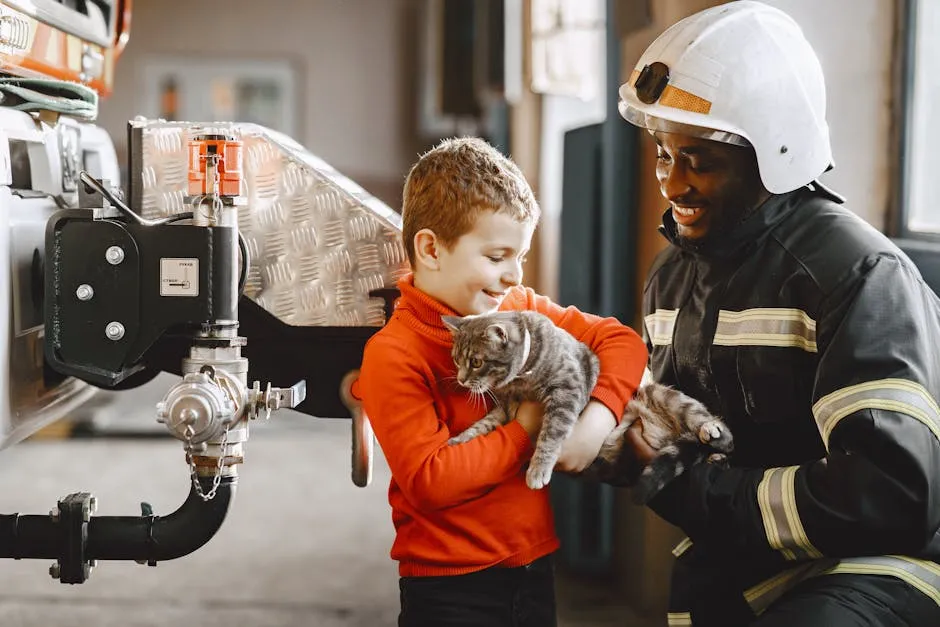
Myths and Misconceptions about Firefighter Divorce
Common Misconceptions
Firefighter divorce rates are often sensationalized, leading to exaggerated claims. Some sources claim that up to 85% of firefighters get divorced! This statistic is not only misleading but also lacks credible backing. Such myths can create fear around firefighter relationships and make it seem like failure is inevitable.
So, where do these misconceptions come from? A combination of anecdotal evidence and cultural narratives contributes to the confusion. Firefighters often share stories about the struggles of maintaining relationships. These discussions can inadvertently amplify the idea that divorce is a common outcome.
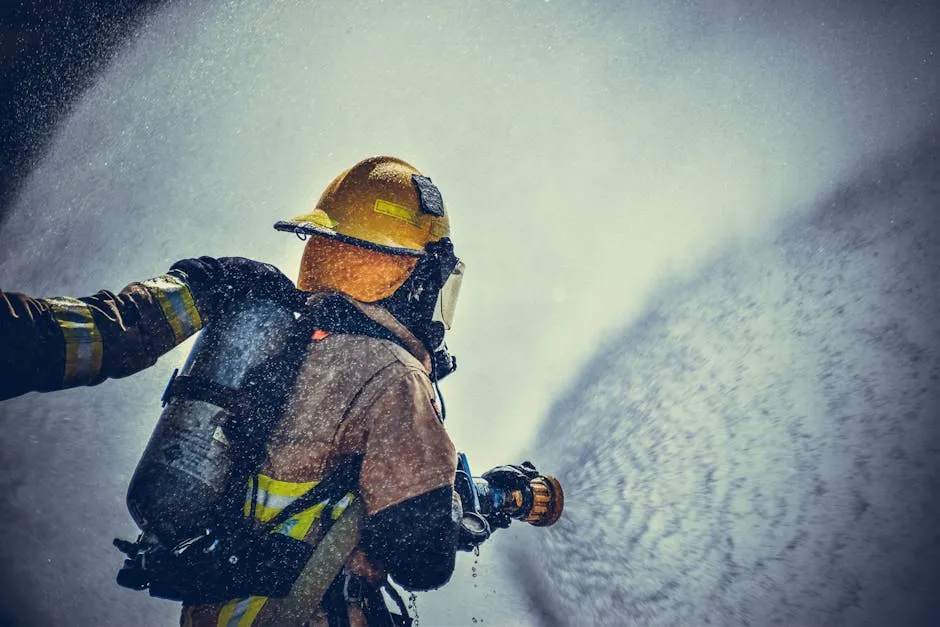
Moreover, when a few firefighters in a department face marital issues, it can lead to assumptions that the entire profession is plagued by divorce. This creates a stigma that overshadows the real stories of resilience and commitment found within many firefighter families.
Research indicates that the reality is much less dramatic. For instance, male firefighters have a divorce rate of about 11.8%. In contrast, the general population’s divorce rate hovers around 9.4%. While female firefighters do experience a higher divorce rate—32.1% compared to 10.4% for women in the general public—most male firefighters maintain stable marriages.
Addressing these myths is vital. It helps create a more accurate picture of firefighter relationships and allows couples to seek support when needed. By focusing on the facts, we can dispel the misconceptions and foster a better understanding of the challenges faced by firefighters and their families.
Reality vs. Perception
The narrative surrounding firefighter divorce rates often relies on sensationalized figures. Some sources claim that as many as 85% of firefighters get divorced. Yikes! That sounds more like a plot twist in a soap opera than reality. But let’s set the record straight. Research shows that male firefighters have a divorce rate of approximately 11.8%. In comparison, the general population sits around 9.4%. So, yes, there’s a slight difference, but it’s hardly the disaster many believe it to be.

The situation looks a bit different for female firefighters, who face a divorce rate of 32.1%. That’s significantly higher than the general rate of 10.4% for women. This disparity raises eyebrows and often leads to misunderstandings about the personal lives of those in firefighting. The myths can create an air of fear and uncertainty among firefighters and their families, leading to stress before any actual issues arise.
These exaggerated statistics can foster a culture of fear. Firefighters may start to believe that failure in relationships is inevitable. This mindset can create additional strain, making it harder for couples to navigate the unique challenges of the profession. When communication breaks down, misunderstandings can escalate. It’s essential to differentiate between sensationalized numbers and the actual experiences of firefighters.
By addressing misconceptions and focusing on empirical findings, we can foster a more supportive environment for firefighters and their families. Clarity can help reduce unnecessary anxiety and pave the way for healthier relationships.
Strategies for Improving Marital Stability
Building Healthy Relationships
Firefighters and their spouses face unique challenges. To help maintain healthy relationships, communication is key. Regular check-ins can make a world of difference. Firefighters often keep their feelings bottled up. Encourage open discussions about daily experiences and stressors. This practice builds emotional support and fosters intimacy.
Quality time together is essential. Schedule regular date nights to reconnect. It doesn’t need to be extravagant. A simple movie night at home or a stroll in the park can work wonders. Small gestures, like cooking dinner together, can strengthen bonds. Surprise each other with little notes or acts of kindness—these small gestures go a long way in showing appreciation.

Understanding each other’s schedules is equally important. Firefighters have unpredictable hours. Plan activities around these shifts. Try to align schedules for family dinners or weekend outings. This effort shows commitment to the relationship, even amidst the chaos. And why not cozy up with a Firefighter Themed Blanket during those chilly movie nights?
Lastly, consider seeking professional help when needed. Couples therapy can provide a safe space to discuss issues and build better communication skills. It’s a proactive step that can help couples navigate the unique challenges of the firefighting lifestyle.

Mental Health Resources
Firefighters often face mental health challenges that can impact relationships. Thankfully, there are resources available. Many fire departments offer counseling services to support mental health. Check with your department to see what options exist.
Peer support groups can also be beneficial. Connecting with others who understand the unique stressors of firefighting can help normalize experiences. Sharing stories and coping strategies can lead to valuable insights.
Additionally, community support groups exist. Organizations like the International Association of Fire Fighters (IAFF) offer resources for mental health support. They provide access to counseling and workshops focused on stress management and resiliency training.
Don’t underestimate the importance of addressing mental health. Prioritizing emotional well-being can significantly improve personal relationships. By utilizing available resources, firefighters and their spouses can work together to strengthen their bonds and navigate the challenges of the profession effectively. And for those looking to unwind, an Aromatherapy Diffuser can be a great addition to your self-care routine.
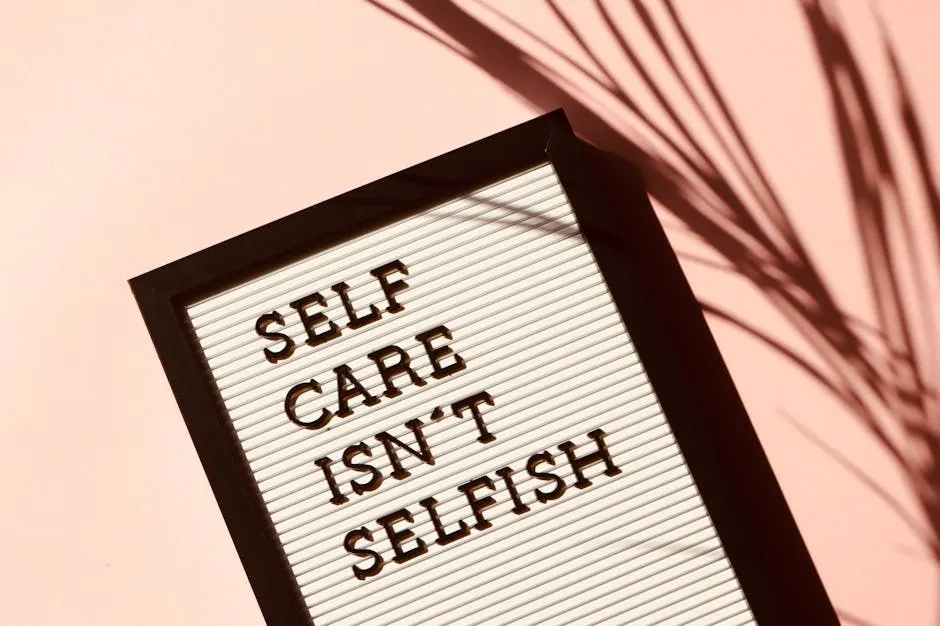
FAQs
Why do firefighters have higher divorce rates?
Firefighters face unique challenges, including irregular schedules and exposure to trauma. These factors can strain relationships and lead to divorce.
Are male firefighters more likely to stay married than female firefighters?
Yes, statistics indicate that male firefighters experience lower divorce rates than female firefighters, whose rates are significantly higher.
What can firefighters do to maintain their relationships?
Communication and emotional support are vital. Regular date nights and understanding each other’s schedules can help strengthen relationships.
How do firefighter divorce rates compare to other professions?
Firefighter divorce rates are lower than military personnel but higher than the general population, particularly for female firefighters.
Please let us know what you think about our content by leaving a comment down below!
Thank you for reading till here 🙂 And if you’re a firefighter or know one, consider gifting them a Firefighter Coffee Mug to brighten their day!
All images from Pexels




